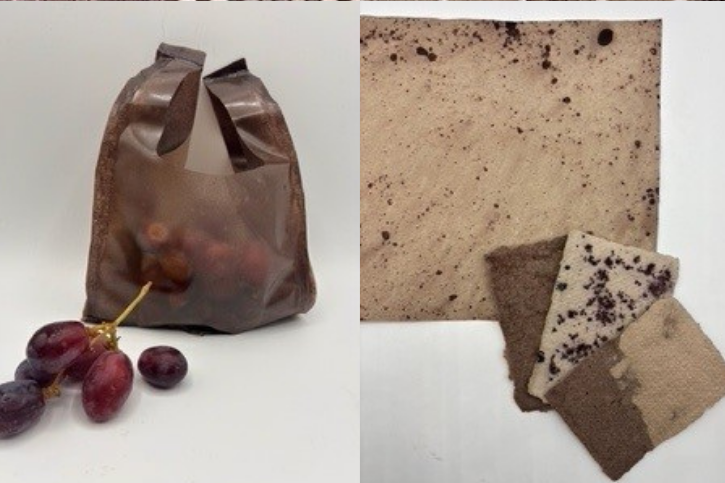Sustainability Series: Biodegradable wine packaging turns grape waste into a sustainable solution
Published 26th August 2025
A Nottingham Trent University graduate has found an inventive way of tackling one of the wine industry’s biggest waste problems. Her project has the potential to inspire design and technology students to think differently about sustainability, materials, and product design.
Tackling waste in the wine industry
For every 100 litres of wine produced, 30 kilograms of grape waste is created. Globally, this adds up to around 3.5 billion kilograms each year. BA Product Design graduate Ella Sainsbury chose to address this issue in her final-year project.
Her idea, called Pressed, transforms grape pomace, which includes the skins, stalks, and seeds left after winemaking, into fully biodegradable packaging. Normally this by-product is composted in bulk, which produces methane and contributes to greenhouse gas emissions. By seeing this waste as a material resource, Ella was able to develop a sustainable solution.

Turning waste into new materials
The Pressed packaging prototypes are designed to be home-compostable and entirely plastic-free. Ella has created a range of materials from waste grapes, including foams, films and rigid structures. These have already been developed into shopping bags, bottle sleeves, protective inserts, coasters, menu covers, wine boxes, and bottle collars.
Importantly, the material formulations can be adapted for different uses, showing students how design can meet functional needs while reducing environmental impact.
Inspiration from nature
Ella was inspired by the idea that in natural systems, nothing is wasted. She explained:
“When a leaf falls from a tree, fungi and microorganisms break it down, returning nutrients to the soil. With plastics, the opposite happens. Packaging often outlives the product it was used for, breaking down into harmful microplastics that remain in our environment for centuries.”
This is a striking example for students learning about sustainable design, biomimicry and the circular economy.

Making links to the classroom
This project demonstrates how waste materials can be repurposed into new products, linking directly to units on materials, sustainability, prototyping, and iterative design. It also offers a case study for exploring wider themes such as global waste issues, the lifecycle of products, and the social responsibility of designers.
Students could be encouraged to think about waste streams in their own lives and communities. What everyday materials might they redesign or repurpose? How might they balance functionality, sustainability, and aesthetics?
Connecting with ‘Inspired by Industry’
Ella’s Pressed project links perfectly with Bulletproof’s ‘Inspired by Industry’, a classroom context that encourages students to explore the impact and improvement of packaging, focusing on sustainability and secondary uses. While prototypes in the classroom may focus on card and paper, students are also invited to experiment with alternative materials such as mycelium, fabric, timber or polymers, reinforcing the 6R’s of sustainability.
Together, Pressed and Bulletproof’s context give teachers a powerful way to show how designers are rethinking packaging in response to global challenges. Students can draw inspiration from Ella’s real-world example and then apply the same creative thinking in their own classroom projects.
‘Inspired by Industry’ is FREE for all teachers to use. Members of the Design & Technology Association also gain access to additional member-only Focused Tasks (FTs), Investigative and Evaluative Activities (IEAs), and curriculum units for even deeper classroom engagement.
Looking ahead
Although Pressed began as a university project, Ella hopes to collaborate with wineries in the future, turning their grape waste into on-site packaging. This vision shows how designers can partner with industries to reduce emissions, cut plastic use, and raise awareness of sustainable alternatives.
For the classroom, it offers an inspiring example of how young designers can use creativity to challenge the norm and design for a better future.
Back to News


